
HMS Hecla was a Royal Navy Hecla-class bomb vessel launched in 1815. Like many other bomb vessels, she was named for a volcano, in this case Hekla in southern Iceland. She served at the Bombardment of Algiers in 1816. Subsequently, she took part in three expeditions to the Arctic. She then served as a survey vessel on the coast of West Africa until she was sold in 1831. She became a merchantman and in 1834 a Greenland whaler. She was wrecked in 1840.

The Quincy Mine is an extensive set of copper mines located near Hancock, Michigan. The mine was owned by the Quincy Mining Company and operated between 1846 and 1945, although some activities continued through the 1970s. The Quincy Mine was known as "Old Reliable," as the Quincy Mine Company paid a dividend to investors every year from 1868 through 1920. The Quincy Mining Company Historic District is a United States National Historic Landmark District; other Quincy Mine properties nearby, including the Quincy Mining Company Stamp Mills, the Quincy Dredge Number Two, and the Quincy Smelter are also historically significant.
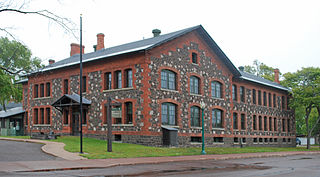
Keweenaw National Historical Park is a unit of the U.S. National Park Service. Established in 1992, the park celebrates the life and history of the Keweenaw Peninsula in the Upper Peninsula of the U.S. state of Michigan. As of 2009, it is a partly privatized park made up of two primary units, the Calumet Unit and the Quincy Unit, and 21 cooperating "Heritage Sites" located on federal, state, and privately owned land in and around the Keweenaw Peninsula. The National Park Service owns approximately 1,700 acres (690 ha) in the Calumet and Quincy Units. Units are located in Baraga, Houghton, Keweenaw, and Ontonagon counties.
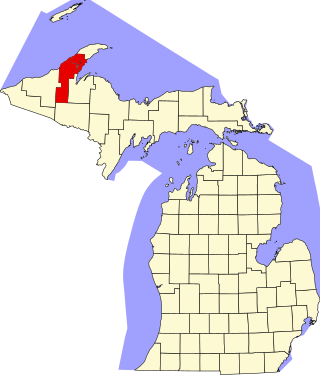
This is a list of the National Register of Historic Places listings in Houghton County, Michigan.

Burke is a ghost town in Shoshone County, Idaho, United States, established in 1887. Once a thriving silver, lead and zinc mining community, the town saw significant decline in the mid-twentieth century after the closure of several mines.

Erasmus Darwin Leavitt Jr., also known as E. D. Leavitt, was a noted American mechanical engineer best known for his steam engine designs.

Burke Canyon is the canyon of the Burke-Canyon Creek, which runs through the northernmost part of Shoshone County, Idaho, U.S., within the northeastern Silver Valley. A hotbed for mining in the late-nineteenth and twentieth centuries, Burke Canyon now contains several ghost towns and remnants of former communities along Idaho State Highway 4, which runs northeast through the narrow canyon to the Montana border.

The Calumet and Hecla Mining Company was a major copper-mining company based within Michigan's Copper Country. In the 19th century, the company paid out more than $72 million in shareholder dividends, more than any other mining company in the United States during that period.

In Michigan, copper mining became an important industry in the 19th and early 20th centuries. Its rise marked the start of copper mining as a major industry in the United States.

James MacNaughton, also variously known as "the King of Houghton County", the "Czar of the Copper Country" or simply "Big Jim" was an American business executive. He was general manager and the third president of the Calumet and Hecla Mining Company, including during the Copper Country Strike of 1913–1914.
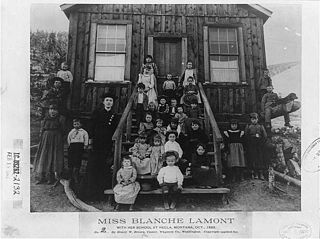
Hecla was a town in Beaverhead County, Montana, United States. It has been designated as a ghost town, with only a few ruined buildings remaining. It was notable at one time as the home of Blanche Lamont, who taught at Hecla's one-room schoolhouse. Lamont would become the first of two murder victims of Theodore Durrant. Margaret Brown also lived there for a time.

Dundas was a historical mining locality, mineral field and railway location on the western foothills of the West Coast Range in Western Tasmania. It is now part of the locality of Zeehan.
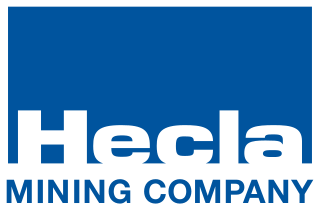
Hecla Mining is a gold, silver and other precious metals mining company based in Coeur d'Alene, Idaho. Founded in 1891, is the second-largest mining company that produces silver in the country. This area is known as the Silver Valley (Idaho). In 1983, this entire area was designated as a Superfund site by the Environmental Protection Agency, because of land, water, and air contamination resulting from a century of mostly unregulated silver and gold mining.

The Calumet Historic District is a National Historic Landmark District that encompasses most of the village of Calumet, Michigan. The district was designated in 1989 for the community's importance in the history of the region's copper mining industry.

The Calumet and Hecla Industrial District is a historic district located in Calumet, Michigan and roughly bounded by Hecla & Torch Lake Railroad tracks, Calumet Avenue, Mine and Depot Streets. The district contains structures associated with the copper mines worked by the Calumet and Hecla Mining Company, located along a line above the copper lode, where railroad tracks connected separate mine heads. The Historic District is completely contained in the Calumet Historic District and the Keweenaw National Historical Park. It was designated a Michigan State Historic Site in 1973 and was listed on the National Register of Historic Places in 1974.

The Quincy Dredge Number Two is a dredge currently sunk in shallow water in Torch Lake, across M-26 from the Quincy Mining Company Stamp Mills Historic District and just east of Mason in Osceola Township. It was constructed to reclaim stamping sand from the lake for further processing, and was designated a Michigan State Historic Site in 1978.

The Lucky Friday mine is an underground silver, lead, and zinc mine in the western United States, near Mullan, Idaho. Operated by Hecla Mining company, it is one of the few mines remaining operational in the Silver Valley of northern Idaho, producing 1000 tons of ore per day. The ore deposit type is Polymetallic veins of hydrothermal origin. The mining method used is underhand cut and fill mining.
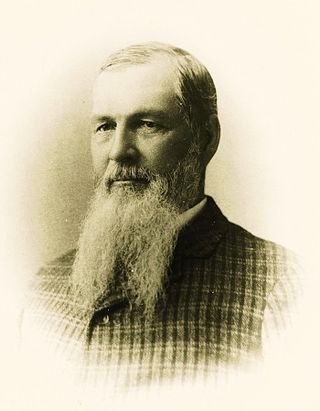
Noah Armstrong was a superintendent of the Glendale smelter and discoverer of the Hecla Mine in western Montana. Later in life he moved to Seattle, where he established the Seattle Transfer Company.
Hecla is a former way station situated in Yavapai County, Arizona, United States. Its name is derived from the nearby Hecla mine. It is also known as Stone Corral. Hecla has an estimated elevation of 4,596 feet (1,401 m) above sea level.
Hecla is a ghost town in Laramie County in the U.S. state of Wyoming.




















